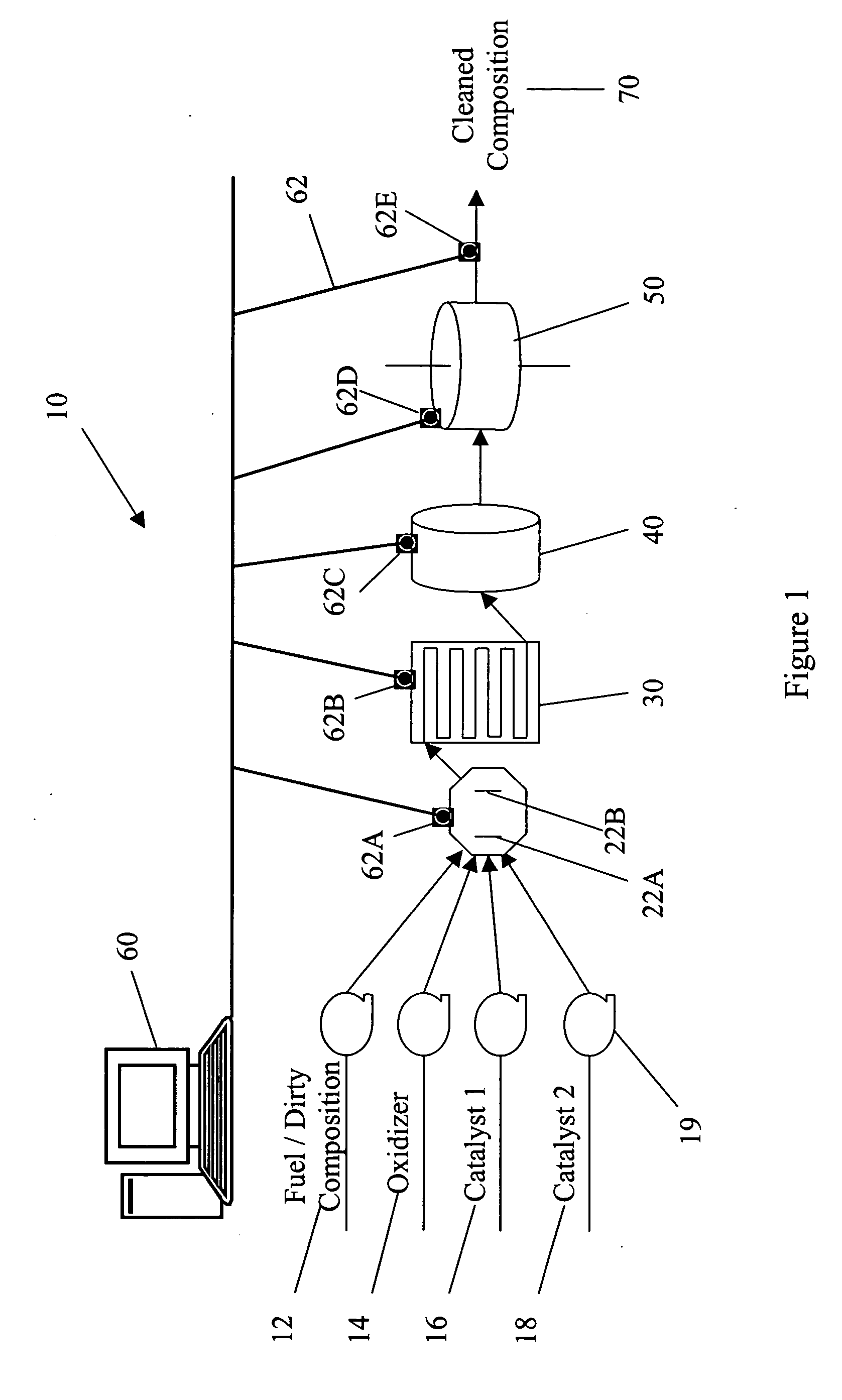Methods and apparatus for processing fuels
a technology of combustible fuels and processing methods, applied in the direction of chemistry apparatus and processes, fuels, organic chemistry, etc., can solve the problems of increasing the amount of hydrogen peroxide or mixing time, affecting the quality of combustible fuels, and reducing the efficiency of combustible fuels
- Summary
- Abstract
- Description
- Claims
- Application Information
AI Technical Summary
Benefits of technology
Problems solved by technology
Method used
Image
Examples
Embodiment Construction
[0018] In FIG. 1, a purifying system 10 generally includes feed lines for input composition 12, oxidizer 14, first catalyst 16, second catalyst 18, a mixer 20, a separator 30, a filter 40, a centrifuge 50, computer controller 60, and an exit line 70. Pumps 19 provide motive force for movement of the corresponding compositions. In general, the vessels and various other conduction lines described herein are preferably made of stainless steel, glass, or other material that is non-reactive to the various chemicals.
[0019] Input composition 12 would usually be a liquid fuel, i.e. liquid that can reasonably be combusted to produce motive and / or heat energy. For example, fuel 12 is contemplated to include all manner of petroleum based compositions (e.g., gasoline, diesel, heating oil, and jet fuel), agriculturally based compositions (e.g., biodiesel, ethanol, olive, soybean, cotton, rapeseed, safflower, corn and other and vegetable oils), and non-petroleum, non-agriculturally based composi...
PUM
| Property | Measurement | Unit |
|---|---|---|
| capacity volume | aaaaa | aaaaa |
| capacity volumes | aaaaa | aaaaa |
| capacity volumes | aaaaa | aaaaa |
Abstract
Description
Claims
Application Information
 Login to View More
Login to View More - R&D
- Intellectual Property
- Life Sciences
- Materials
- Tech Scout
- Unparalleled Data Quality
- Higher Quality Content
- 60% Fewer Hallucinations
Browse by: Latest US Patents, China's latest patents, Technical Efficacy Thesaurus, Application Domain, Technology Topic, Popular Technical Reports.
© 2025 PatSnap. All rights reserved.Legal|Privacy policy|Modern Slavery Act Transparency Statement|Sitemap|About US| Contact US: help@patsnap.com

